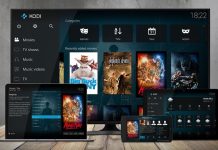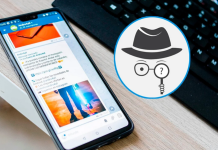Smart Exchange is a leader in software and programs for SmartBoard users, and anyone looking to utilize its maximum capabilities ought to get acclimated with sequencing. There are a number of benefits to using software on Smart Exchange that uses sequencing, and in a way, it can make things much easier for you and more dynamic for your audience.
Whether you are a teacher, daycare instructor, business professional, or tutor, Smart Exchange has technology for you to help send content to the audience in a more clear and concise manner, as well as fully realize the power of your SmartBoard. Before getting into the sequencing options on Smart Exchange, let’s talk about SmartBoard technology and what ways it may be able to assist you in your presentations and lectures.

Maximizing the Potential of Your SmartBoard
SmartBoard technology has been around for the better part of a decade, but many become acclimated to it in the classroom. If you are older than about 25 years old, it is likely that you have not encountered one of these pieces of smart tech in the classroom, seeing as you have not been in K-12 for some time. Even some colleges are still opting to use chalkboards or whiteboards, but for many schools at all levels, SmartBoard technology is the future. Once cost is figured out, many schools transition to SmartBoard tech to assist in the education process.
In offices, there are a growing number of business uses for SmartBoard technology now as well. Presentations can often be bland, and even the once interactive PowerPoint program has grown a little stale. Many workers now have been growing accustomed to practices that were technologically trendy in the past decade, which means new tech must help lead the way to reinventing the conference room and its meetings. SmartBoard technology is perfect for this reason.
SmartBoard technology allows for users to have an interactive role in the meeting or presentation process. For those who are new to SmartBoard technology, it is not difficult to learn how to use the intricate hardware, and because of its user friendly design, many catch on quickly. SmartBoards are not just for presenters either. There are a number of ways to get involved as an audience member. Whether it is going up to the board to highlight or emphasize areas of importance, or maybe interacting with a game using Smart Exchange’s wide variety of applications and softwares, the audience is no longer an inactive part of presentations.
A huge reason that SmartBoard technology has gotten more popular is the Smart Exchange platform. This area of the booming piece of tech is where users can upload programs and software that others can use for their lessons or meetings. Much of Smart Exchange is education based, but much more business and corporate software is coming every day. The best part of Smart Exchange is access to it is free for those who have a SmartBoard and can utilize the technology. This means every owner of a SmartBoard has a wide variety of plans and programs at their fingertips all for being owners of this incredible hardware.

Sequencing
Sequencing is basically a term used for Smart Exchange software that has a set of programming that allows the users involved to play along and do a number of things. A popular sequence for classrooms is the ability to drag answers to questions on a particular section of the curriculum to test the student’s knowledge on content covered in class. You see it a lot from math teachers looking for students to match things like equations, answers, or difficult sections of advanced subjects like trigonometry or calculus.
Office spaces also use sequences in Smart Exchange to do things like make presentations that have dynamic media files integrated into the slides. Another important reason you may want to use a Smart Exchange sequence in the workplace is to allow managers to test their employees on things regarding policy and rules. For example, if HR is going over a new policy on computer use, you may have workers go up to the board and drag scenarios into boxes indicating whether or not they are permitted or not. This way, the content that may be dry and straightforward is available in an interactive way.
Sequences are available on Smart Exchange, and created by all sorts of content creators across the country and internationally. The great thing about finding sequences on SmartExchange is the intuitive search ability that is hosted on the site. By searching for sequences for the classroom, you can find a variety of ways to make content review much more interesting. For example, with a Jeopardy sequence, you an insert questions and answers to provide students with a fun way to review for an exam.
Sequencing is an easy way to get an audience involved, no matter who they are or what level of education. Even pre-k students can utilize software from Smart Exchange. A popular sequence on the site is a lesson washing hands, and at the end of a few slides indicating how to adequately wash and dry your hands, students drag clip art images in order of which step goes where. It’s a great way to get technology into pre-k classrooms early so they can learn the technology and be more fluent in its uses by the time they enter K-12. This way, they grow up learning the technology, and can likely use it in the office when they get jobs as adults.

The Importance of Sequencing
Sequencing in Smart Exchange programs and software allows users in both the audience and instructional role to participate in the content. Anything being presented, whether its a classroom or meeting, is important, and all must be involved to help the information sink in. Comprehension can be tough, even for adults, and the content being delivered can sometimes get lost in monotony. Luckily, Smart Board technology allows for users to have a way to all interact, grow, and learn together, building cohesiveness and increasing knowledge.

Taylor is a freelance SEO copywriter and blogger. His areas of expertise include technology, pop culture, and marketing.













